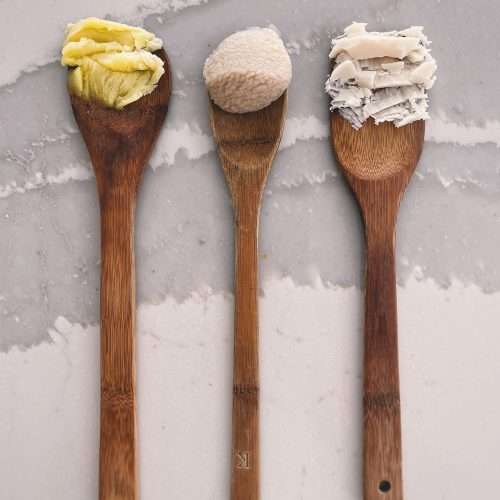
Rendering Fat: How to Make Tallow, Lard and Schmaltz
Rendering fat is a traditional skill that involves slowly cooking down animal fats and it's making a comeback in homestead kitchens. It's easy to do, affordable, and provides a versatile fat source for high-heat cooking and making things like candles, soap, and skin care products!
Equipment
- 1 Knife
- 1 Food processor optional, but highly recommended
- 1 Crockpot
- 1 Fine mesh strainer or cheese cloth
- 1 Container for storage
Ingredients
- Raw animal fat suet, leaf fat, chicken fat, duck fat, bear fat, etc.
Instructions
- Start with very COLD fat (straight out of the fridge) and roughly chop into 2" chunks and trim off any bits of meat, gristle, or blood.
- Next, add the chopped and trim raw fat to a food processor and let it go until it resembles ground beef. If you don't have a food processor, just chop it up as finely as you can.
- Add the ground raw fat to a crockpot and cook on low (with the lid ajar) for 6-8 hours. We want super low heat here to preserve the nutrients and reduce any potential oxidation. Keep an eye on it and stir occasionally.
- You know it’s done when the rendered fat is clear and the impurities (or “cracklings”) have accumulated together. Strain out the impurities using a strainer or cheesecloth.
- Pour into a storage container and wait until it cools completely before replacing the lid. The rendered fat will typically turn from a golden yellow to a soft white as it cools, depending on the type of fat.
- Store fully cooled, rendered fat in an airtight container for 4-6 months in the cupboard, 12 months in the fridge, or indefinitely in the freezer.
Notes
*You can also use a large stockpot on the stove, but this increases the risk of burning. Keep it on the lowest heat setting possible!
*The storage container you want to use depends on the type of fat that you are rendering. Most rendered fats (lard, schmalz, bear grease, etc.) are fairly soft and spreadable, so a mason jar works well. They also make super cute lard containers!
*However, tallow is hard and needs to be “chipped away” to be used, so I like to use a shallow, glass food storage container. You can use a mason jar, but it can be challenging to get it back out.
Tried this recipe?Let us know how it was!